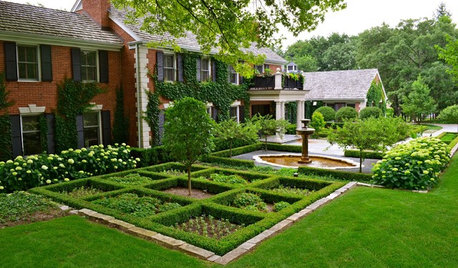Is my lawn a lost cause or is there still hope?
Mike_13
10 years ago
Related Stories

GARDENING GUIDESBoxwood: Still Shape-Shifting After 350 Years
Wild or mild, the humble boxwood still brings style and order to all kinds of gardens
Full Story
SELLING YOUR HOUSESave Money on Home Staging and Still Sell Faster
Spend only where it matters on home staging to keep money in your pocket and buyers lined up
Full Story
GROUND COVERSGive Your Lawn a Taste of the Wild
Consider the joys of an irregularly trimmed meadow lawn: It’s ecofriendly, visually interesting and still good for romping
Full Story
BEFORE AND AFTERSSee 6 Yards Transformed by Losing Their Lawns
Wondering whether a turf lawn is the best use of your outdoor space? These homeowners did, and they found creative alternatives
Full Story
LANDSCAPE DESIGNCalifornia Says Goodbye to the Sprawling Ornamental Lawn
New state rules will effectively limit turfgrass to 25 percent of the landscape in most new and renovated yards
Full Story
SAVING WATERHouzz Call: Are You Letting Go of Your Lawn?
Many facing a drought are swapping turf for less thirsty plantings. If you’re one of them, we’d like to hear about it
Full Story
MOST POPULARMeet a Lawn Alternative That Works Wonders
Carex can replace turfgrass in any spot, is low maintenance and adjusts easily. Add its good looks and you’ve got a ground cover winner
Full Story
LANDSCAPE DESIGN15 Great Ideas for a Lawn-Free Yard
End the turf war for good with hardscaping, native grasses and ground covers that save water and are easier to maintain
Full Story
GARDENING GUIDESHow to Fix Bare and Yellow Lawn Spots
Restore your turf’s good looks by reseeding unsightly patches
Full Story
FRONT YARD IDEASBefore and After: Front Lawn to Prairie Garden
How they did it: Homeowners create a plan, stick to it and keep the neighbors (and wildlife) in mind
Full StorySponsored
Franklin County's Custom Kitchen & Bath Designs for Everyday Living
More Discussions








grass1950
Mike_13Original Author
Related Professionals
Towson Landscape Architects & Landscape Designers · Willowick Landscape Architects & Landscape Designers · Allentown Landscape Contractors · Cockeysville Landscape Contractors · El Reno Landscape Contractors · Huntley Landscape Contractors · Indio Landscape Contractors · San Bruno Landscape Contractors · Whitehall Landscape Contractors · York Landscape Contractors · Forest Hill Landscape Contractors · North Aurora Landscape Contractors · Quartz Hill Landscape Contractors · Ferguson Landscape Contractors · Mount Pleasant Swimming Pool Buildersgrass1950
dchall_san_antonio
Mike_13Original Author
dchall_san_antonio
Mike_13Original Author
dchall_san_antonio
Mike_13Original Author
dchall_san_antonio
Mike_13Original Author
dchall_san_antonio
Mike_13Original Author
dchall_san_antonio